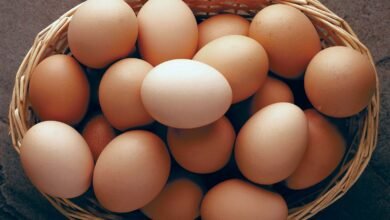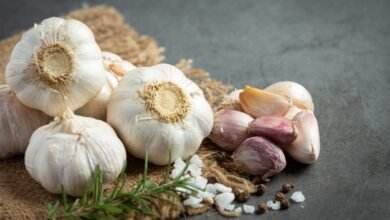7 Avocado Hair Masks That Nourish and Hydrate

We already know avocado is good on toast and in sushi, but did you know it’s also good for your hair?
For many of the same reasons, the fruit — yes, avocado is technically a fruit — is beneficial for your health and hair.
Read on for seven avocado-based hair masks we love. We’ll also touch on the best practices for using and removing hair masks, as well as tips for keeping your hair healthy.
Avocados are extremely moisturizing and nourishing because they contain natural oils and both polyunsaturated and monounsaturated fatty acids (the “good” fats). While these oils can be beneficial to all hair types, they’re especially helpful for dry, dehydrated hair.
The fruit is also rich in vitamins that can nourish the scalp and help hair look healthy, shiny, and hydrated. You may have heard that biotin helps hair and nails grow. This is especially true in people have a biotin deficiency, which is rare.
Avocado is a great source of biotin, and adding this B-complex vitamin back into the diet may help hair to grow more healthily.
A 2015 studyTrusted Source found that minerals in avocado oil, including potassium and magnesium, may seal cuticle cells, which can help hair look smooth and shiny and prevent it from breaking.
While there haven’t been many clinical studies on the effects of avocado on hair, vegetable oil has been shown to help protect hair from damage, and fatty acids have been found to reduce oil and improve hair’s overall quality.
Anecdotally speaking, many people note that their hair feels silkier and stronger after using an avocado mask.
Avocado masks are easy to make at home, and you may already have all the ingredients you need in your kitchen.
1. Avocado and coconut oil
Ingredients
- 1 avocado
- 2–3 tbsp. coconut oil
Directions
For smooth, shiny hair, use a fork to mash one full avocado in a bowl. Start with 2 tablespoons of coconut oil and mix together.
Coconut oil has been shown to absorb easily into hair and protect the strands from outside damage. You can add more coconut oil if you prefer more of a liquid mask. Apply starting at the tips of the hair and work your way up to the scalp.
2. Avocado, olive oil, and lemon juice
Ingredients
- 1 avocado
- 1/4 cup olive oil
- 1 tbsp. lemon juice
Directions
Mash the avocado, and mix in the olive oil and lemon juice. It’ll look like soupy guacamole. Apply to damp or dry hair from root to tip.
Lemon is antifungal and may help reduce oil and dandruff. But if not properly rinsed, it may temporarily bleach the hair. The emollient properties of olive oil will help soften hair.
3. Avocado, egg, and olive oil
Ingredients
- 1/2 avocado
- 1 egg
- 1 tsp. olive oil
Directions
Blend the ingredients together with a fork or spoon. Whisking will work in a pinch.
You can adjust the proportions of this mask depending on the length and thickness of your hair. In addition to the moisturizing benefits of avocado and olive oil, egg is rich in protein, which helps strengthen the hair and protects against split ends and heat damage.
4. Aloe and avocado
Ingredients
- 1 ripe avocado
- 2 tbsp. of aloe vera gel
- 1 tsp. of coconut oil
Directions
Stir or blend the three ingredients together, adding more coconut oil if you have very long or thick hair.
Aloe has anti-inflammatory propertiesTrusted Source that can soothe the scalp, and the vitamin content in both aloe and avocado will nourish hair.
5. Banana and avocado
Ingredients
- 1 ripe banana
- 1/2 avocado
Directions
Mash or blend the ingredients together, and apply to damp hair from root to tip. Banana has high silica content, so it works to smooth hair and add shine.
6. Yogurt, honey, olive oil, and avocado
Ingredients
- 1 cup yogurt (opt for plain Greek yogurt)
- 1/2 ripe avocado
- 2 tbsp. olive oil
- 1 tbsp. honey
Directions
Blend or stir the ingredients until a smooth paste forms.
Apply to damp hair. Honey may seem sticky, but it’s a humectant, meaning it pulls moisture from the air and locks into hair for added hydration.
A 2017 study showed that the probiotics in yogurt can help reduce dandruff.
7. Oatmeal and avocado
Ingredients
- 1/2 ripe avocado
- 1/2 cup oatmeal
Directions
First, prepare the oatmeal according to its cooking instructions, and let it cool to room temperature — you don’t want to burn your scalp! Blend with the avocado until it forms a smooth paste. Apply to the hair from root to tip.
Oatmeal can help soothe a dry, itchy scalp.
For best results, apply avocado masks to dry hair. Avocado hair masks are oil-based, so wet hair will repel the oil and won’t penetrate as deeply as it will on dry hair.
Leave on for 20 to 30 minutes.
If you’d like, you can leave a hair mask on overnight. However, there isn’t much evidence to support that leaving the mask on past the point of saturation is any more beneficial.
If you do decide to leave it on overnight, cover your hair with a shower cap or put a towel on your pillow to avoid staining.
Rinse out the mask in the shower, then shampoo and condition as normal. If you feel that your hair looks oily even after shampooing, you may consider shampooing twice to get the mask fully out.
Avocado is largely considered safe. However, if you know you’re allergic to avocado, you’ll want to skip the mask, as it can cause adverse side effectsTrusted Source.
If you’ve never eaten an avocado but want to use it in a hair mask, it’s best to try a skin patch before applying it to your hair. This involves putting a small amount of avocado on your forearm.
Wait 30 minutes or so, and if skin shows no signs of allergic reaction — like no redness, itching, or stinging — it should be fine to use on your scalp and hair.
Masks aren’t the only way to maintain healthy hair. An easy switch is to rinse your hair with lukewarm or even cold water.
Before you shampoo, use warm water to open the cuticle, which allows the shampoo to penetrate each strand for a deeper clean. Rinse with cooler water to seal the cuticle for shiny hair.
When drying your hair, use a microfiber towel. It’s more gentle on the hair than terry cloth, which can weaken and damage the hair.
A silk pillowcase can also help protect the hair. It creates less friction on the hair, and therefore frizz, plus the material holds less dirt and oil.
An easy way to avoid hair damage is by limiting heat styling, such as blow drying, straightening, and curling. If you need to use hot tools, you can use a thermal heat protectant spray which will help keep the hair healthy and soft.
Your diet can affect hair health
Hair is really just made up of dead cells, which is why it doesn’t hurt when you cut it. You can change the appearance of your hair, but it’s difficult to change its actual makeup unless you change the way it grows.
One way to change your hair’s health is to eat a well-rounded, vitamin-rich diet. Vitamin and antioxidant-rich foods can help promote healthy hair growth.
Some of the best foods for hair include:
- greens, like spinach and kale
- berries, which have vitamin C to help promote collagen
- nuts
- seeds
- oysters and other zinc-rich foods
- fatty fish, which contain omega-3s
- avocado, which gives the body vitamin E and a dose of fatty acids






